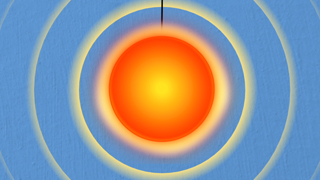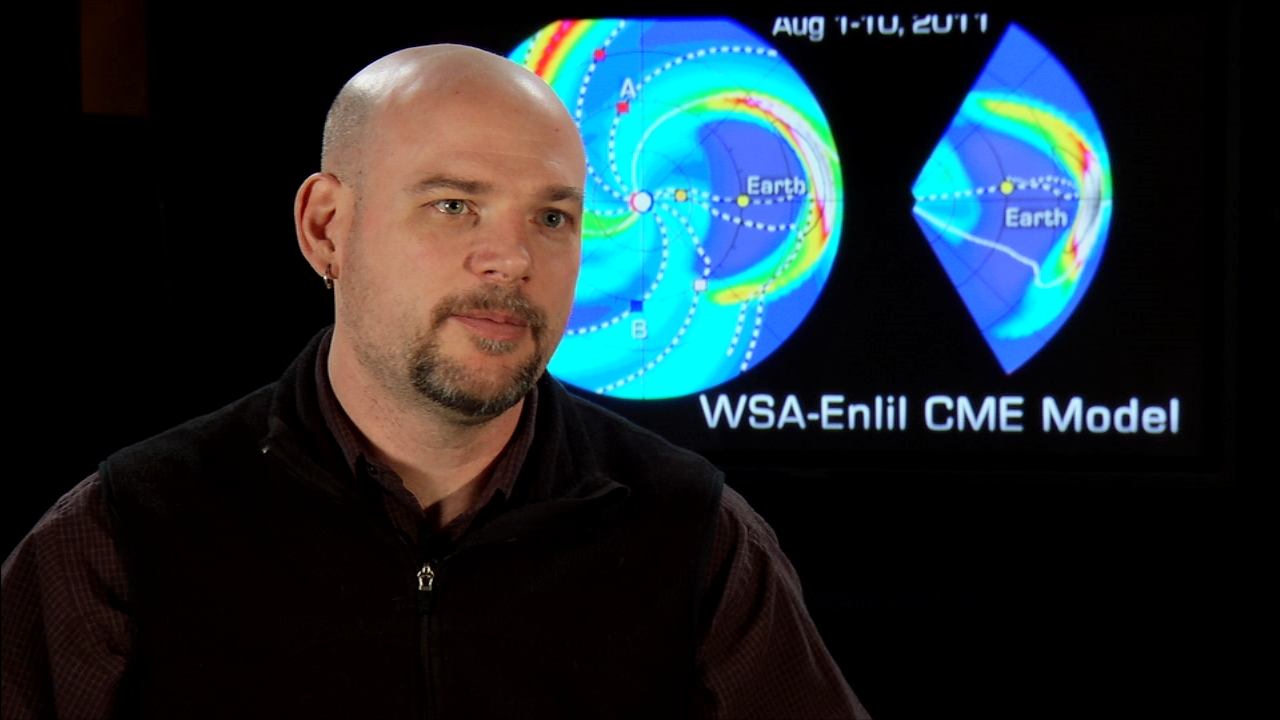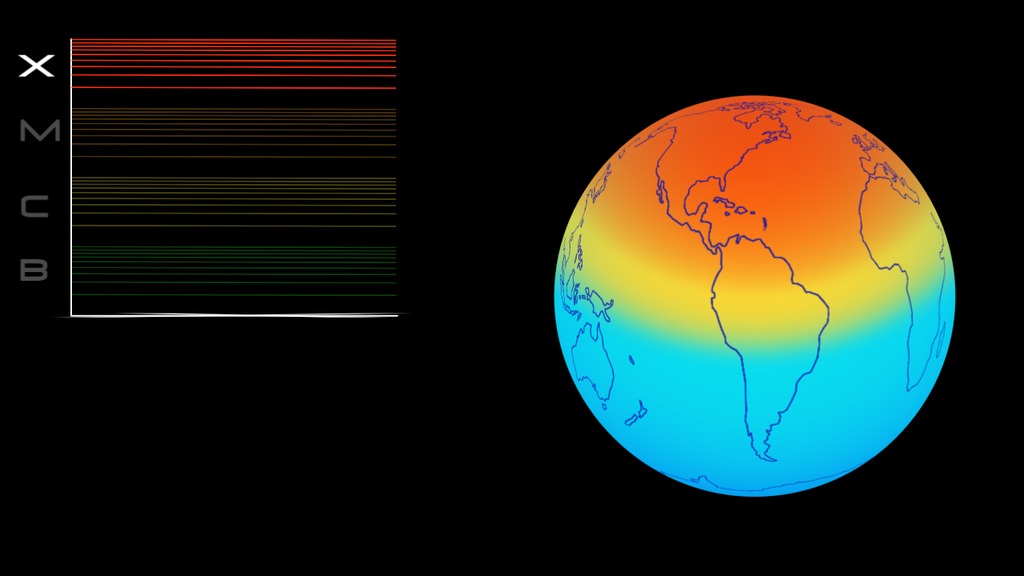Sun Emits Mid-Level Flare and Prominence Eruption
The sun emitted a mid-level solar flare, peaking at 1:32 pm EDT on May 3, 2013. Solar flares are powerful bursts of radiation. Harmful radiation from a flare cannot pass through Earth's atmosphere to physically affect humans on the ground, however — when intense enough — they can disturb the atmosphere in the layer where GPS and communications signals travel. This disrupts the radio signals for as long as the flare is ongoing, and the radio blackout for this flare has already subsided.
This flare is classified as an M5.7-class flare. M-class flares are the weakest flares that can still cause some space weather effects near Earth. Increased numbers of flares are quite common at the moment, as the sun's normal 11-year activity cycle is ramping up toward solar maximum, which is expected in late 2013.

A burst of solar material leaps off the left side of the sun in what's known as a prominence eruption. This image combines three images from NASA's Solar Dynamics Observatory captured on May 3, 2013, at 1:45 pm EDT, just as an M-class solar flare from the same region was subsiding. The images include light from the 131-, 171- and 304-angstrom wavelengths.
Credit: NASA/SDO/AIA

A burst of solar material leaps off the left side of the sun in what's known as a prominence eruption. This image combines three images from NASA's Solar Dynamics Observatory captured on May 3, 2013, at 1:45 pm EDT, just as an M-class solar flare from the same region was subsiding. The images include light from the 131-, 171- and 304-angstrom wavelengths. Full resolution 4k image.
Credit: NASA/SDO/AIA

NASA's Solar Dynamics Observatory captured this image of an M5.7-class flare on May 3, 2013, at 1:30 p.m. EDT. This image shows light in the 131-angstrom wavelength, a wavelength of light that can show material at the very hot temperatures of a solar flare and that is typically colorized in teal.
Credit: NASA/SDO/AIA

NASA's Solar Dynamics Observatory captured this image of an M5.7-class flare on May 3, 2013, at 1:30 p.m. EDT. This image shows light in the 131-angstrom wavelength, a wavelength of light that can show material at the very hot temperatures of a solar flare and that is typically colorized in teal. Full resolution 4k image.
Credit: NASA/SDO/AIA

SOHO LASCO coronograph image from 18:47 UT on May 3. The white circle represents the sun.
Credit: SOHO/ESA&NASA

SOHO LASCO coronograph image from 21:18 UT on May 3. The white circle represents the sun.
Credit: SOHO/ESA&NASA
For More Information
Credits
Please give credit for this item to:
NASA's Goddard Space Flight Center. However, individual images should be credited as indicated above.
-
Producers
- Scott Wiessinger (USRA)
- Genna Duberstein (USRA)
-
Writer
- Karen Fox (ADNET Systems, Inc.)
Series
This page can be found in the following series:Tapes
The media on this page originally appeared on the following tapes:-
2013 Heliophysics Breaking News
(ID: 2013021)
Tuesday, December 31, 2013 at 5:00AM
Produced by - Robert Crippen (NASA)
Datasets used
-
[SOHO]
ID: 93SOHO monitors the Sun with a variety of instruments. Among the SOHO instruments is the Michelson Doppler Interferometer (MDI) and the Extreme ultraviolet Imaging Telescope (EIT).
This dataset can be found at: http://sohowww.nascom.nasa.gov
See all pages that use this dataset -
[SDO]
ID: 168This dataset can be found at: http://sdo.gsfc.nasa.gov/
See all pages that use this dataset
Note: While we identify the data sets used on this page, we do not store any further details, nor the data sets themselves on our site.
Release date
This page was originally published on Friday, May 3, 2013.
This page was last updated on Wednesday, May 3, 2023 at 1:52 PM EDT.


